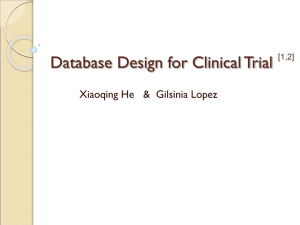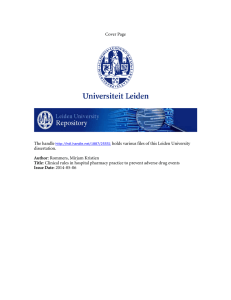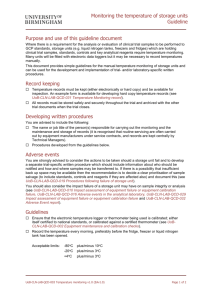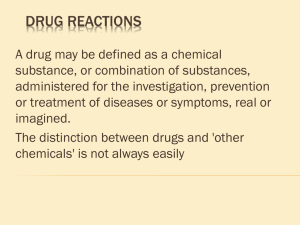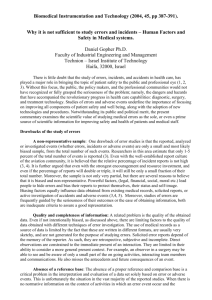pharmacovigilance-blog
advertisement
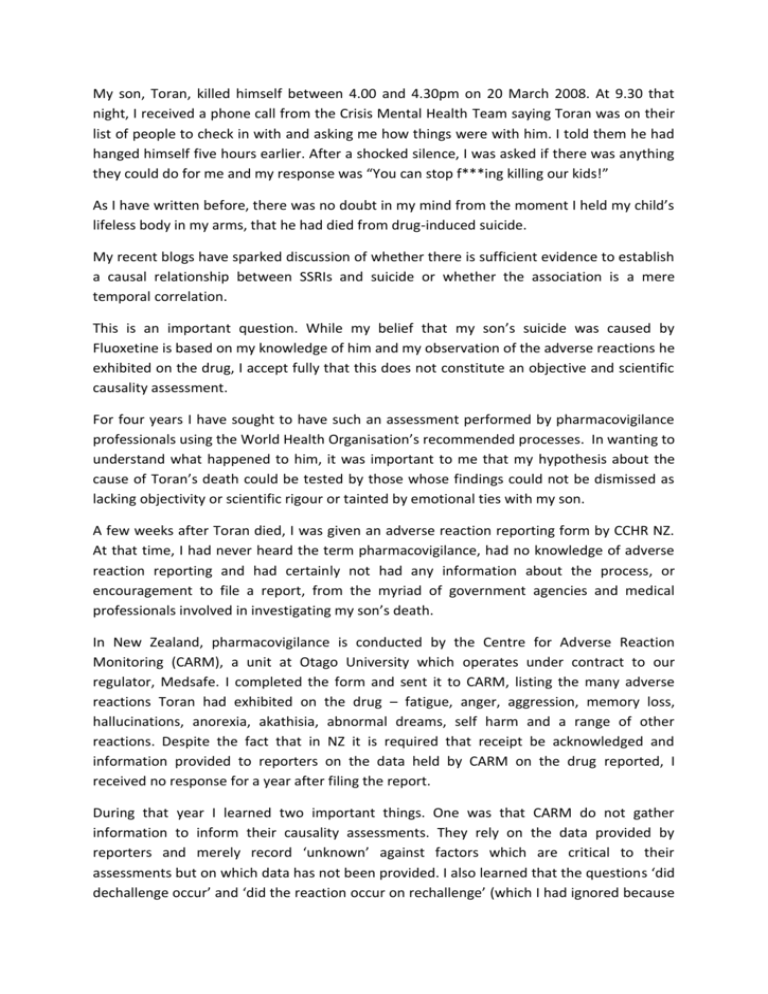
My son, Toran, killed himself between 4.00 and 4.30pm on 20 March 2008. At 9.30 that night, I received a phone call from the Crisis Mental Health Team saying Toran was on their list of people to check in with and asking me how things were with him. I told them he had hanged himself five hours earlier. After a shocked silence, I was asked if there was anything they could do for me and my response was “You can stop f***ing killing our kids!” As I have written before, there was no doubt in my mind from the moment I held my child’s lifeless body in my arms, that he had died from drug-induced suicide. My recent blogs have sparked discussion of whether there is sufficient evidence to establish a causal relationship between SSRIs and suicide or whether the association is a mere temporal correlation. This is an important question. While my belief that my son’s suicide was caused by Fluoxetine is based on my knowledge of him and my observation of the adverse reactions he exhibited on the drug, I accept fully that this does not constitute an objective and scientific causality assessment. For four years I have sought to have such an assessment performed by pharmacovigilance professionals using the World Health Organisation’s recommended processes. In wanting to understand what happened to him, it was important to me that my hypothesis about the cause of Toran’s death could be tested by those whose findings could not be dismissed as lacking objectivity or scientific rigour or tainted by emotional ties with my son. A few weeks after Toran died, I was given an adverse reaction reporting form by CCHR NZ. At that time, I had never heard the term pharmacovigilance, had no knowledge of adverse reaction reporting and had certainly not had any information about the process, or encouragement to file a report, from the myriad of government agencies and medical professionals involved in investigating my son’s death. In New Zealand, pharmacovigilance is conducted by the Centre for Adverse Reaction Monitoring (CARM), a unit at Otago University which operates under contract to our regulator, Medsafe. I completed the form and sent it to CARM, listing the many adverse reactions Toran had exhibited on the drug – fatigue, anger, aggression, memory loss, hallucinations, anorexia, akathisia, abnormal dreams, self harm and a range of other reactions. Despite the fact that in NZ it is required that receipt be acknowledged and information provided to reporters on the data held by CARM on the drug reported, I received no response for a year after filing the report. During that year I learned two important things. One was that CARM do not gather information to inform their causality assessments. They rely on the data provided by reporters and merely record ‘unknown’ against factors which are critical to their assessments but on which data has not been provided. I also learned that the questions ‘did dechallenge occur’ and ‘did the reaction occur on rechallenge’ (which I had ignored because I didn’t understand what they meant) were very important questions. They ask whether the reaction disappeared when the drug was stopped and reappeared when the drug was restarted. This is a critical factor in assessing causality. A consumer-friendly reporting questionnaire would explain this term or use language understood by the layperson. The risk of not doing so is that people like me fail to provide important information because they do not understand technical terms and causality assessments are flawed. This knowledge led me to submit a revised adverse reaction report and to understand that if I wanted a thorough causality assessment, I would need to gather the relevant evidence and provide it to CARM rather than rely on them to gather the required evidence themselves. After many follow ups, I finally received acknowledgement of my report and advice from CARM that in the 20 years since 1989 they had recorded 3 cases of completed suicide where the victim was taking Fluoxetine at the time of their death. They further advised that none of these cases could be assessed as being causally associated with the drug given all had been diagnosed with depression at the time of prescribing. Three reports since 1989? I didn’t know whether to laugh or cry. As a mother who has lost her child on these drugs and who runs an organisation to support other families bereaved by suicide, I get three reports a week! All diagnosed with depression? What about my son who did not have a diagnosis of any mental disorder following a psychiatric assessment on the day he was prescribed, 15 days before he died? The implausibility of this data led me to embark on a study of pharmacovigilance so that I could understand the processes involved in the conclusions that had been reached. I learned that the WHO recommends the use of the Naranjo algorithm for determining whether an adverse drug reaction has occurred or whether the reaction is the result of other factors. This algorithm poses the following questions Are there previous conclusive reports on this reaction? Did the adverse event appear after the suspected drug was administered? Did the adverse reaction improve when the drug was discontinued or a specific antagonist was administered? Did the adverse reaction reappear when the drug was re-administered? Are there alternative causes (other than the drug) that could solely have caused the reaction? Was the drug detected in the blood (or other fluids) in a concentration known to be toxic? Was the reaction more severe when the dose was increased, or less severe when the dose was decreased? Did the patient have a similar reaction to the same or similar drugs in any previous exposure? Was the adverse event confirmed by objective evidence? The answers to these questions result in an assessment of the causal relationship being certain, probable, possible, unlikely, Conditional/Unclassified, Unassessable/Unclassifiable. WHO-UMC Causality Categories Causality Term Certain Assessment Criteria* • Event or laboratory test abnormality, with plausible time relationship to drug intake • Cannot be explained by disease or other drugs • Response to withdrawal plausible (pharmacologically, pathologically) • Event definitive pharmacologically or phenomenologically (i.e. an objective and specific medical disorder or a recognised pharmacological phenomenon) • Rechallenge satisfactory, if necessary Probable/Likely • Event or laboratory test abnormality, with reasonable time relationship to drug intake • Unlikely to be attributed to disease or other drugs • Response to withdrawal clinically reasonable • Rechallenge not required Possible Event or laboratory test abnormality, with reasonable time relationship to drug intake • Could also be explained by disease or other drugs • Information on drug withdrawal may be lacking or unclear Unlikely Conditional/ • Event or laboratory test abnormality Event or laboratory test abnormality, with a time to drug intake that makes a relationship improbable (but not impossible) • Disease or other drugs provide plausible explanations Unclassified • More data for proper assessment needed, or • Additional data under examination Unassessable/ Unclassifiable • Report suggesting an adverse reaction • Cannot be judged because information is insufficient or contradictory • Data cannot be supplemented or verified In Toran’s case, the answers to the Naranjo algorithm questions were that there was a significant body of evidence linking suicide and SSRI use, the adverse reactions had been recorded on his medical file as having commenced after the drug was administered, the reactions disappeared or improved when he discontinued the drug and reappeared when it was recommenced, no mental disorder or other possible cause of the reactions was present, the drug was detected in his blood post-mortem, there was a dose-response relationship with the reactions intensifying when the dose of the drug was increased, the reaction had been present on previous exposure and the adverse reactions were confirmed by his family, friends, teachers and mental health professionals. Three and a half years after his death, CARM advised me that they had reached the conclusion that Fluoxetine had been assessed as the probable cause of Toran’s somnolence, anger and aggression and the possible cause of his suicide. Confused as to what factors determined a different level of causality for the suicide as opposed to the other adverse reactions, I called the director of CARM, Dr Michael Tatley to discuss the issue. To my shock, five minutes into the conversation, Dr Tatley said he agreed with me that the assessment of the drug’s role in Toran’s suicide should be upgraded to ‘probable.’ This means that CARM accept that “The event (Toran’s suicide) cannot be explained by concurrent disease (or disorder) or any other drug or chemical” and that Fluoxetine is the most likely cause of his death. Bizarrely CARM claim that no death can be assessed as ‘certain’ because this would require the death to occur on rechallenge and therefore for the person to die twice. After nearly four years of being dismissed as a crazy grieving mother who has no basis on which to base her belief that her child’s death was treatment-induced, I cannot describe the elation with which I received the updated CARM assessment. I still believe the correct assessment is that of ‘certain’ and will continue to engage with CARM on this issue. My key focus however in relation to pharmacovigilance in NZ is the fact that doctors are not reporting suspected adverse reactions and that consumer reports are not being encouraged and are being made unnecessarily difficult. Did any of the six psychiatrists who reviewed my son’s file for inquest file a suspected adverse reaction report? No. Did the psychiatric nurse who was his mental health key worker and who testified at his inquest that he suffered adverse reactions file a report? No. Did his GP? No. The evidence is overwhelming that mental health professionals do not take adverse reaction reporting seriously. In response to an Official Information Act request to CARM recently, I was advised that consumer reports are not being encouraged because CARM do not have the capacity to process increased numbers of reports. Despite acknowledging that the technical language on their forms is a barrier to accurate reporting, this has not been changed. I was provided with the following data on the source of adverse reaction reports for the past five years. Year 2006 2007 2008 2009 2010 2011 Reporter No. % No. % No. % No. % No. % No. % GP 753 26.04 779 27.53 1125 25.88 1233 26.64 860 20.77 991 22.88 Hospital Doctor 416 14.38 405 14.31 443 10.19 483 10.44 529 12.78 513 11.84 Hospital Pharmacist 82 2.84 87 3.07 110 2.53 205 4.43 251 6.06 216 4.99 Community Pharmacist 77 2.66 203 7.17 508 11.69 573 12.38 161 3.89 233 5.38 Nurses 817 28.25 491 17.35 657 15.11 939 20.29 1211 29.25 1338 30.89 Other HCPs 23 0.80 43 1.52 128 2.94 124 2.68 128 3.09 127 2.93 Pharma Company 541 18.71 442 15.62 621 14.29 792 17.11 714 17.25 713 16.46 2 0.07 0 0.00 211 4.85 40 0.86 32 0.77 46 1.06 Public Other 181 6.26 380 13.43 544 12.51 239 5.16 254 6.14 154 3.56 Total for Year 2892 100.00 2830 100.00 4347 100.00 4628 100.00 4140 100.00 4331 100.00 Fascinating is the leap from zero reports by consumers in 2007 to 211 reports in 2008. The pattern is evident in the following graph Number Adverse Reaction Reports Filed by Public 2006 - 2011 250 200 150 100 50 0 2006 2007 2008 2009 2010 2011 CARM explain the increase as being driven by media attention given to adverse reactions in respect of a specific drug in 2008. This is a clear signal that raising awareness of adverse reactions and the process for reporting them is effective in generating consumer reports. My organisation CASPER has been asked to work with our regulator to promote consumer reporting, something we are happy to do on the condition government resources CARM to accommodate increased reporting. Our focus however will be on encouraging families to report to the adverse reporting system established by Prof David Healy which will be up and running in the next month and can be found at https://www.rxisk.org/ When Toran was 15 he got his driver’s licence. We discussed the decision he was required to make at that time about whether he wished to be an organ donor. He said that if he died, he would want to help save the lives of others. Sadly, the manner of his death meant he was unable to donate his organs but I believe that reporting his case and ensuring those charged with pharmacovigilance assess causality thoroughly is a way in which he can help save other lives. Contributing to improved pharmacovigilance in New Zealand is a way in which I can honour my son’s life and take some meaning from his death. At CASPER we are here to support other consumers and families to do the same and can be contacted for help with reporting at www.casper.org.nz
